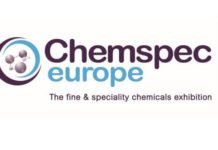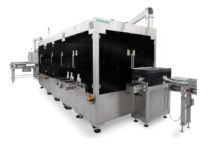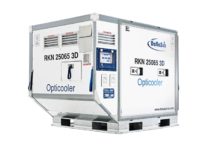Micell Technologies,announced it has enrolled at Mercy Hospital in Auckland, New Zealand, the first patient in DESSOLVE I (DES with Sirolimus and a bioabsorbable pOLymer for the treatment of patients with de noVo lEsions in the native coronary arteries), a first-in-human clinical trial of the company’s investigational MiStent™ Drug Eluting Coronary Stent System (MiStent DES).
DESSOLVE I is a prospective, open-label, non-randomized, single-arm study that is expected to enroll 30 patients at five clinical sites in Belgium, Australia and New Zealand. Candidates for the trial are patients with documented stable or unstable angina pectoris or ischemia. The primary endpoint is in-stent late lumen loss, as measured with angiography in treated de novo lesions ranging in diameter from 2.5 to 3.5 mm and amenable to treatment with a maximum 23 mm long stent.
Along with secondary clinical endpoints such as major adverse cardiac events and revascularization rates, intravascular ultrasound (IVUS) and optical coherence tomography (OCT) will also be employed at multiple timepoints. The DESSOLVE I study uses multiple imaging modalities to better understand the time to complete tissue coverage of the stent struts relative to polymer absorption. More information on the DESSOLVE I trial can be found at
http://www.clinicaltrials.gov/ct2/show/NCT01247428.
“Drug-eluting stents represent a significant advance in interventional cardiology,” said John Ormiston, M.D., Mercy Hospital, Auckland, New Zealand, and co-principal investigator. “However, the rare but potentially catastrophic consequences of late in-stent thrombosis remain to be addressed. The MiStent DES is designed to maintain the polymer-drug matrix on the stent only as long as drug delivery is required. It slowly reverts to a bare-metal stent by the time that drug treatment is completed. These are exactly the properties that interventional cardiologists are looking for in a drug-eluting stent.”
The MiStent DES employs Micell’s proprietary supercritical fluid technology that applies a precisely controlled bioabsorbable polymer — active drug (sirolimus) matrix onto a cobaltchromium stent. The polymer dissolves and releases the drug into the surrounding tissue in a controlled manner, designed to optimize dosing of the drug throughout the affected artery. In pre-clinical trials, the drug completely elutes and the polymer is eliminated within 90 days in vivo resulting in a bare metal stent.


























